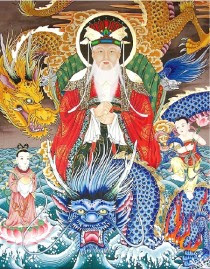What is the Korean meaning of Big Dipper? - Tale of the Nine Tailed 1938

In the drama "Tale of the Nine Tailed," Eobsin has seven stars, known as the Big Dipper, on his forehead. These stars hold special significance in Korea, and let's explore their meaning in the context of the drama. Multiple meanings of the Big Dipper The Big Dipper is the constellation that shines most brightly in the night sky. Because of this characteristic, various legends about the Big Dipper have been passed down, including in East Asia, including Korea. In this region, the shape of the Big Dipper has been seen not as a ladle but as a constellation of a ruler (gwan) and the procession carrying it. The significance of the Big Dipper is mentioned in "Tale of the Nine Tailed 1938," reflecting a belief that has persisted for a long time in East Asian cultures. Another perspective is to consider the stars themselves as deities. Revered as the Seven Star Deity (Chilseongsin), the constellation represents gods who govern the seven stars. People would look up to ...








.jpg)




